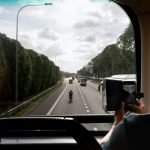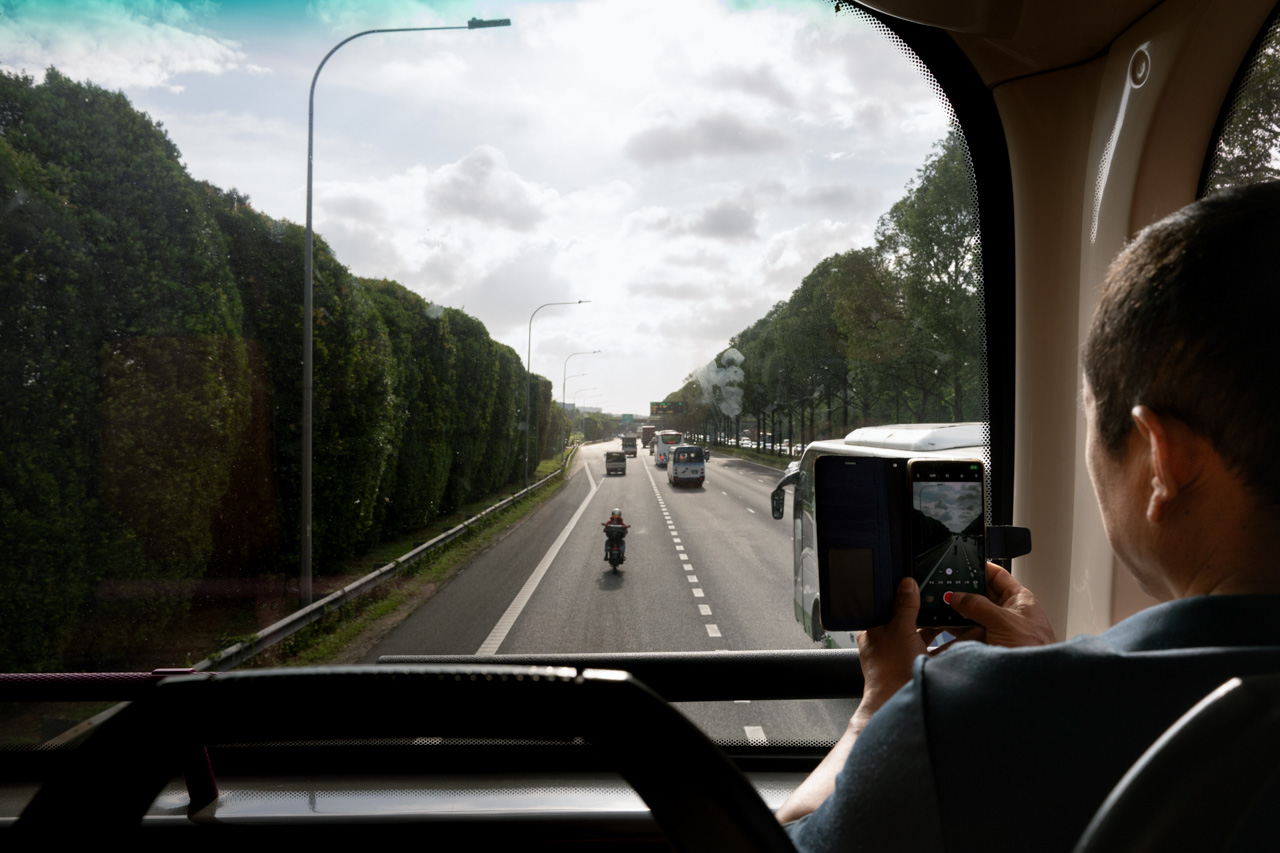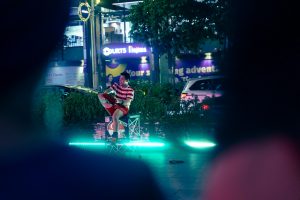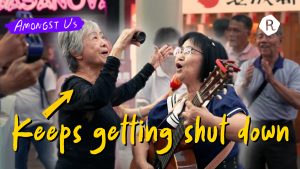All images by Justin Tan for RICE Media.
One childhood memory I hold close with my mother revolves around bus service 154. She’d often tag along for my piano lessons, journeying from Jurong to Clementi by bus. Those long rides felt endless—me clutching my tiny backpack, eyes glued to the sprawling roads that stretched on like forever.
Over time, I would be allowed to take the bus by myself. Watching the unfamiliar world swirling by (and having no sense of geography as a child), I’d count the bus stops, waiting for the moment to press the bell just before the one my mum told me to jump off at.
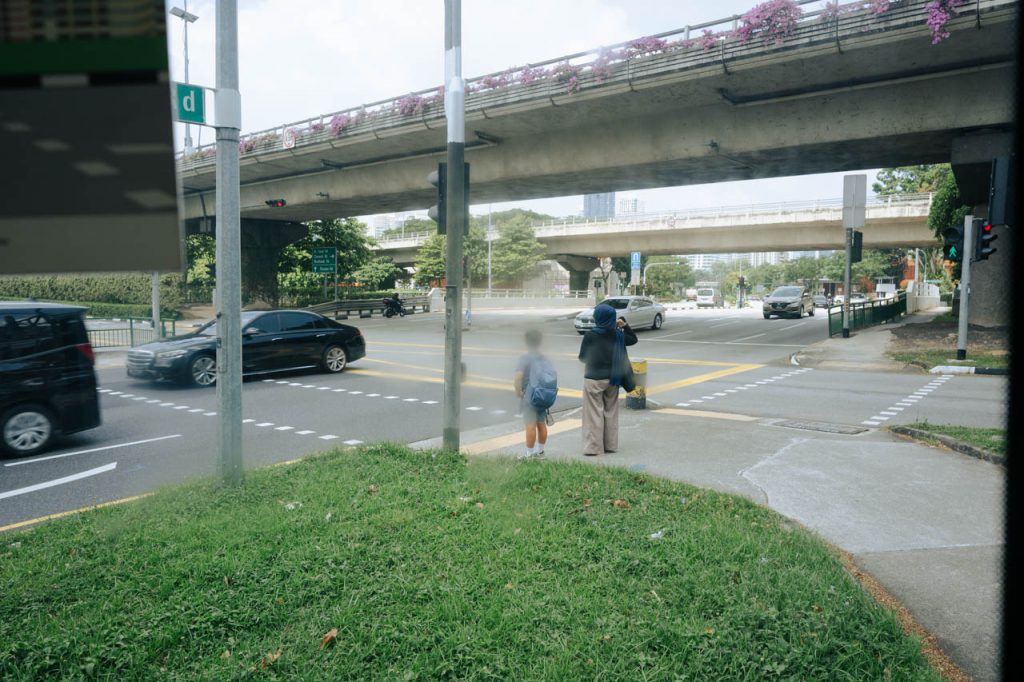
Back then, I had no idea bus 154 would stick with me through the years. It carried me through secondary school and junior college—hour-long rides from Bukit Timah back to Jurong. It was there again in my university days, ferrying me home on weekends.
Now 25 and my college days just behind me, I find myself on bus service 154 again. There’s no destination in particular, and this ride matches the aimlessness I feel right now as an unemployed fresh grad.
I catch my eyes following the same views I was once trying to figure out as an anxious kid navigating an unfamiliar world. The heavy vehicles lumbering down Ayer Rajah Expressway. The hordes of students dropping off along Dunearn Road.
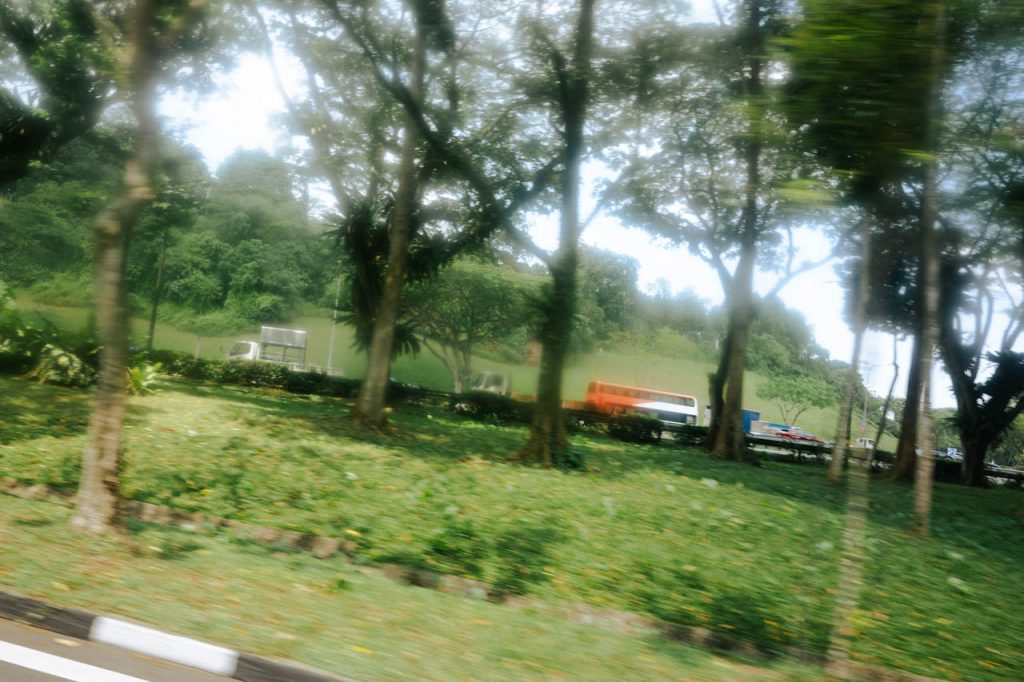
As strangers hop on and off around me, I can’t help but wonder: When a bus route becomes the one constant in our Singaporean lives, how much of us has changed on these commutes?
It’s a question that brought me to accompany three of my friends—Sabrina, Shyartiana and Barani—on the bus routes that saw them grow up.
Sabrina on Sketching on Bus 12
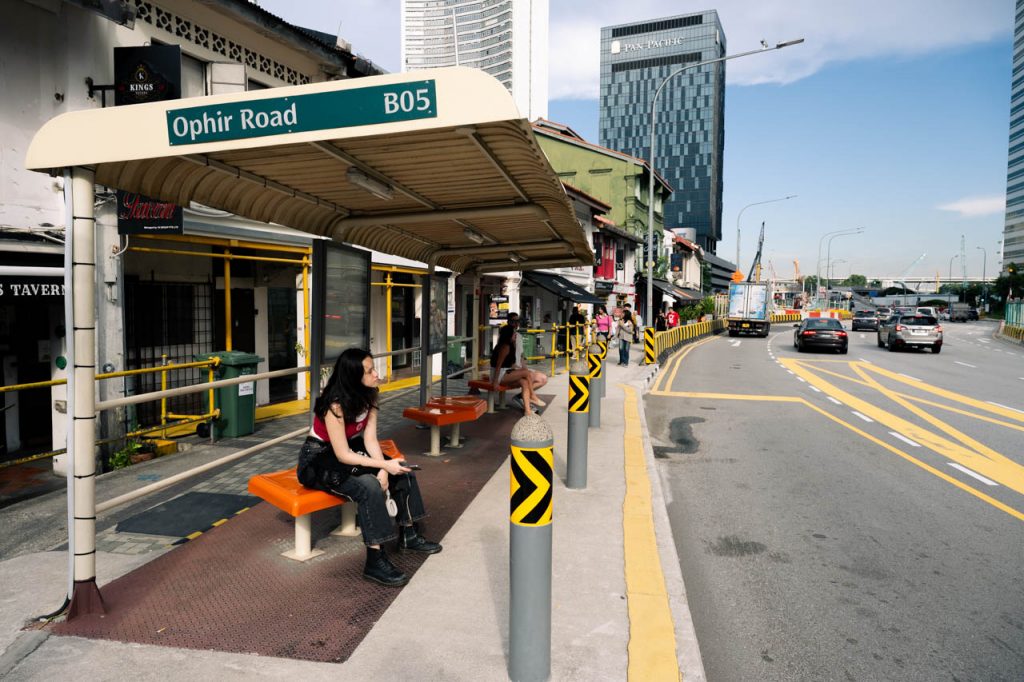
Sabrina tells me about bus service 12, which she grew up taking around Pasir Ris. On the bus with me that day, the 23-year-old graduate student muses that it feels oddly nostalgic. It was once her daily ride home from school as a teen, but she stopped taking it as often when she was in university.
She remembers how she used to have a sketchbook where she would draw fellow commuters: “It was a way to slow down.”
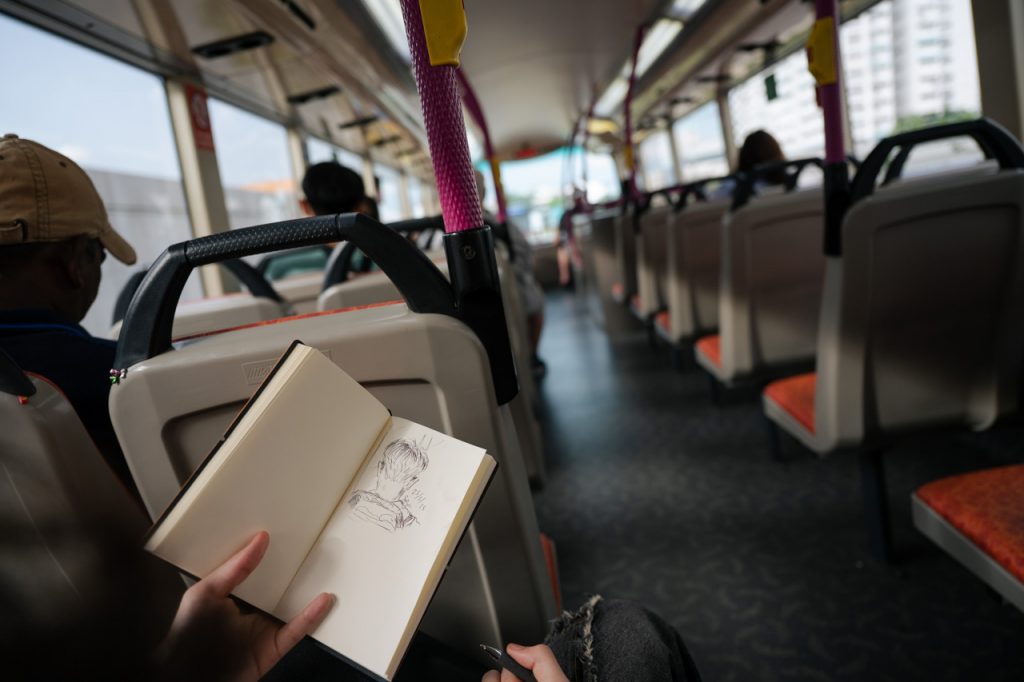
It started as a quiet escape. But over time, it turned into a way of making sense of the world beyond her own.
“I feel it makes the world a little bit more beautiful—you start to notice things that you might not have thought of unless you spent the time to sit down with it and observe.”
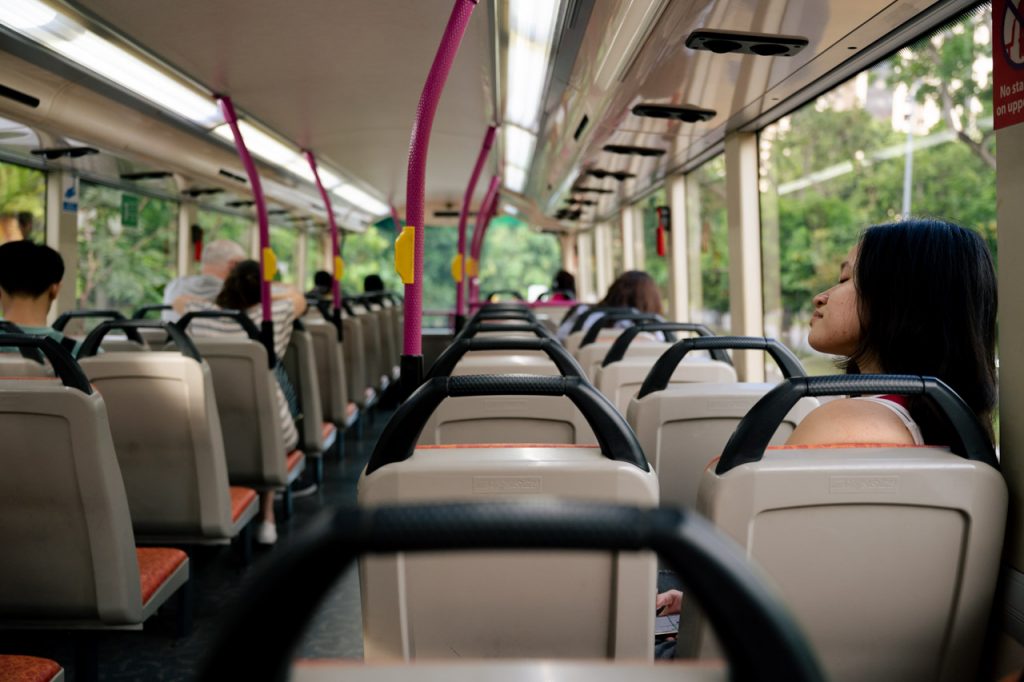
As she drew, she found herself paying closer attention to the forms and features of the people on the bus. She began to notice emotions about people that she might have been indifferent to on commutes.
Each little detail could reveal something about a person’s day. Some people leaned into the windows with tense shoulders, while others melted into their seats.
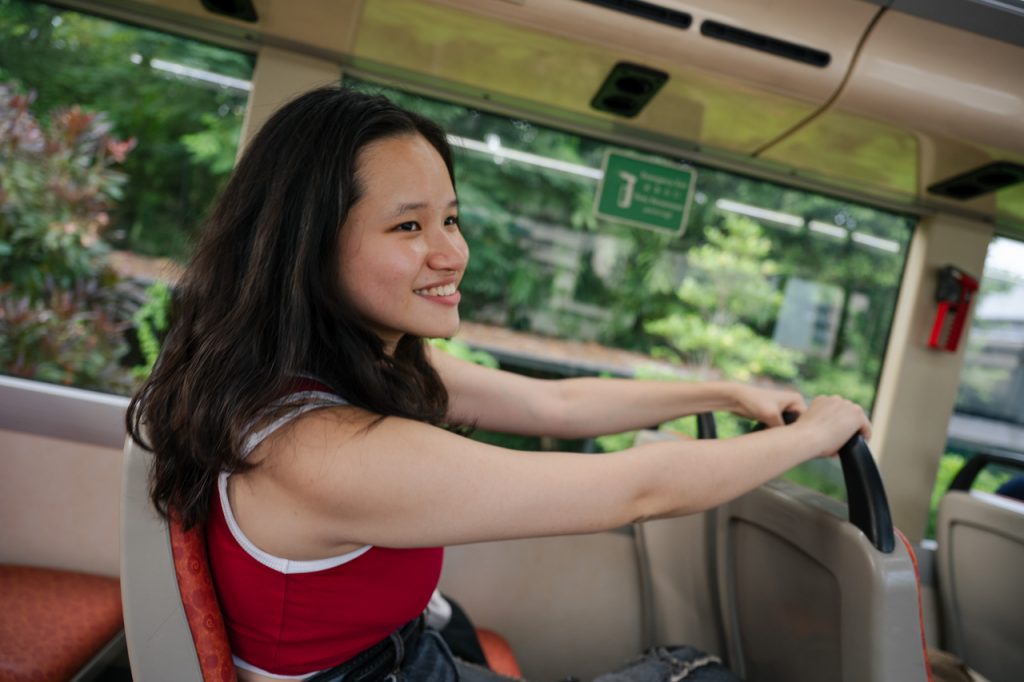
“It used to be a kind of little challenge to myself to try and capture the vibe of somebody before they got off the bus,” Sabrina says.
She still loves to draw—only now it’s mostly on her iPad, far more convenient than hauling around sketchbooks and pens. But looking back, she realises those daily rides on bus 12 trained her eye. They made her notice people more closely, made her curious about the quiet lives unfolding around her.
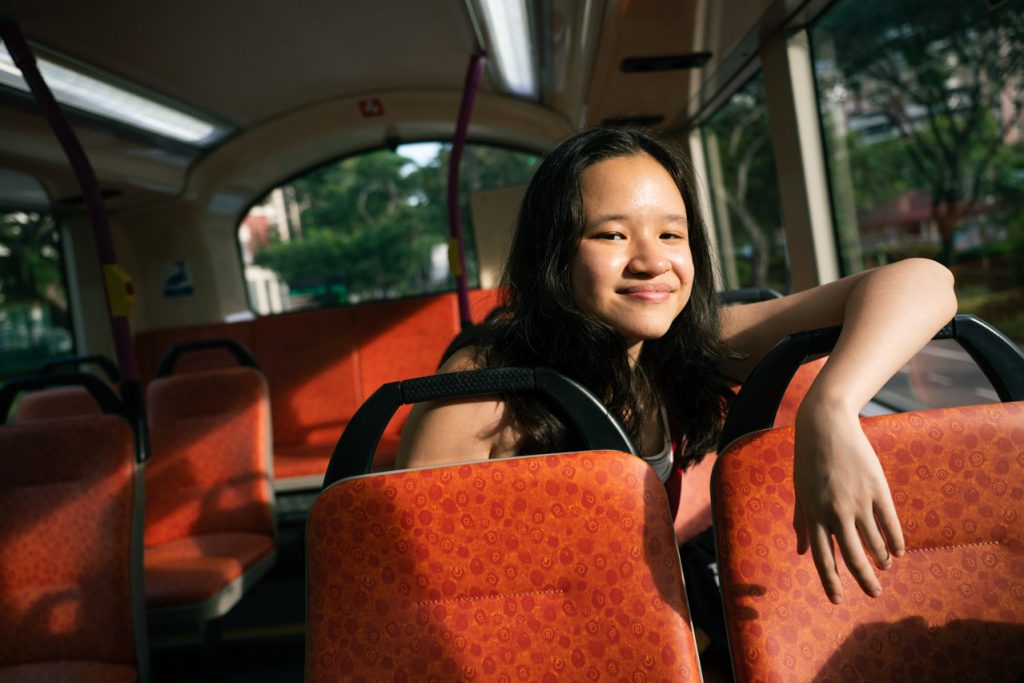
“I’m very fond of that time… being 16 and having my books to sketch on the bus, since I don’t do it often now. Flipping through those sketchbooks feels like a window to a past self.”
Barani on Being Present on Bus 975
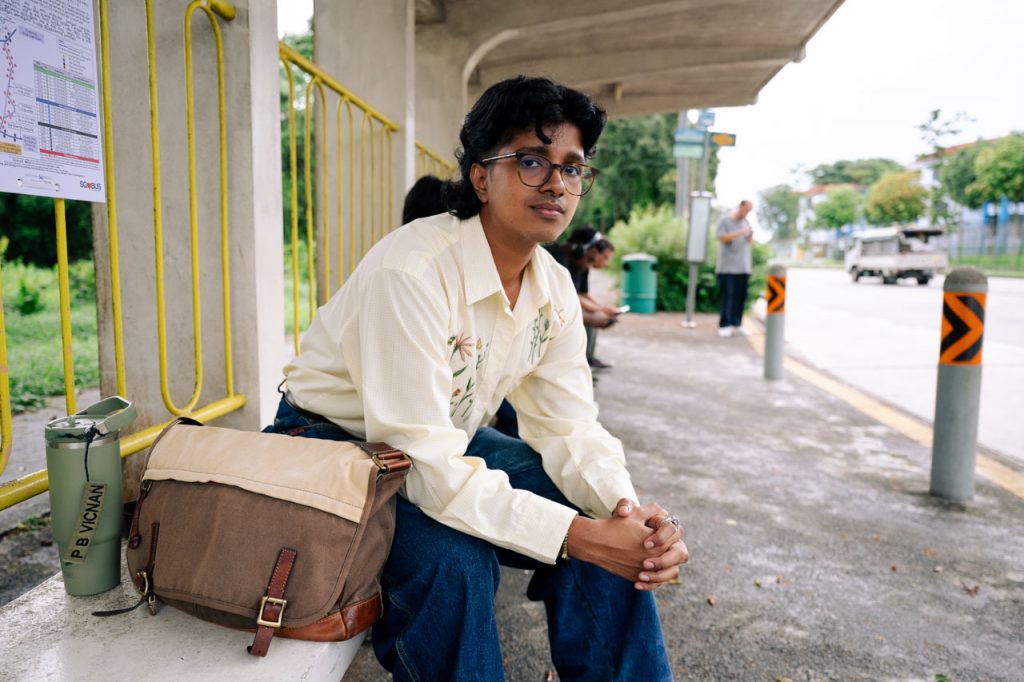
Barani invites me to join him on bus service 975—a route he once took daily during his National Service days.
It’s not the most exciting ride, to be honest. The bus is packed with uniformed servicemen, and the view outside is a blur of bare Lim Chu Kang landscapes.
But Barani likes this particular commute for the vibes. The 23-year-old shares that he treats his bus rides as designated times to zone out and unplug.
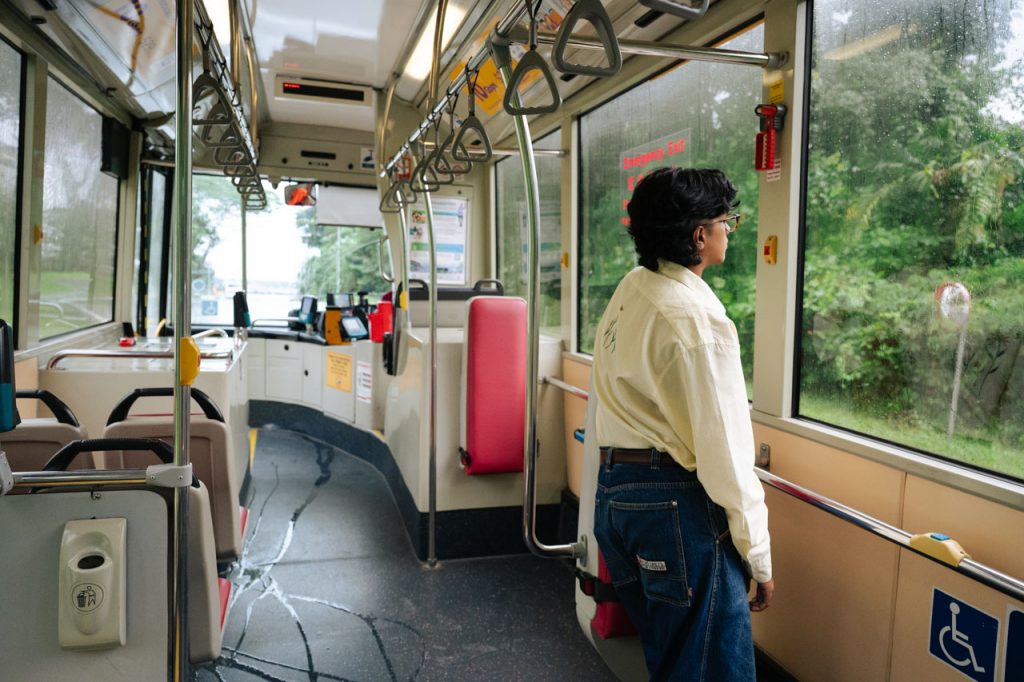
“The thing about my generation is that fast replies are normalised. But I don’t think it should be normalised. Like if it’s not urgent, I don’t have to reply to you ASAP,” he offers.
“If people sent me messages that aren’t urgent, like TikToks or IG Reels, I wouldn’t watch them because it’s strictly my time. There are many times when my friends argued with me, saying that I’m a slow texter, and I’m like, whatever. I just want to listen to music and be with my thoughts.”
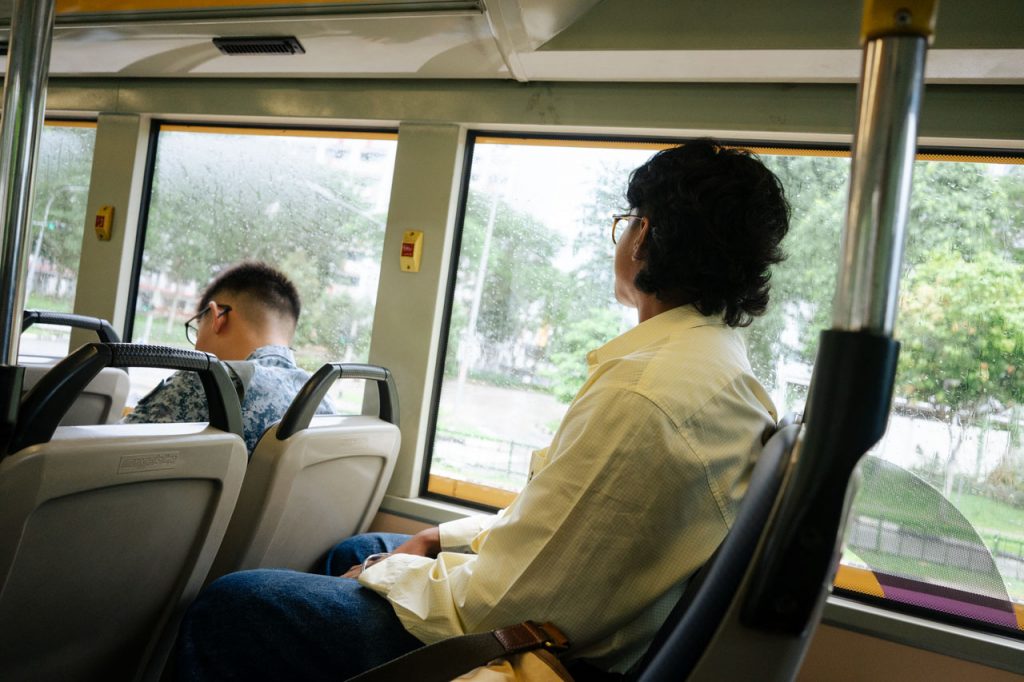
The bus route hasn’t changed—but Barani has. He’s learned to draw clearer boundaries and begun to define what a meaningful life looks like for himself.
He tells me that he has been trying to take his bus commute without any music, and choosing to be present in the environment by paying attention to the sounds around him: “The bus, the aircon, plastic rustling, people’s conversations.”

He recalls a time when he was spending a lot of time trying to find the right music to accompany his bus ride until it struck him: maybe he didn’t need any music at all. “It can be so comforting!”
He realised music often shapes his emotions, or colours his thoughts. Unplugging, on the other hand, helps him sit with them honestly without interference.
“Once your mind comes to a steady grounding, you can hear your thoughts very clearly. You’re able to think about the issue you’re facing, or think about what you need to do later. Everything just becomes crystal clear.”
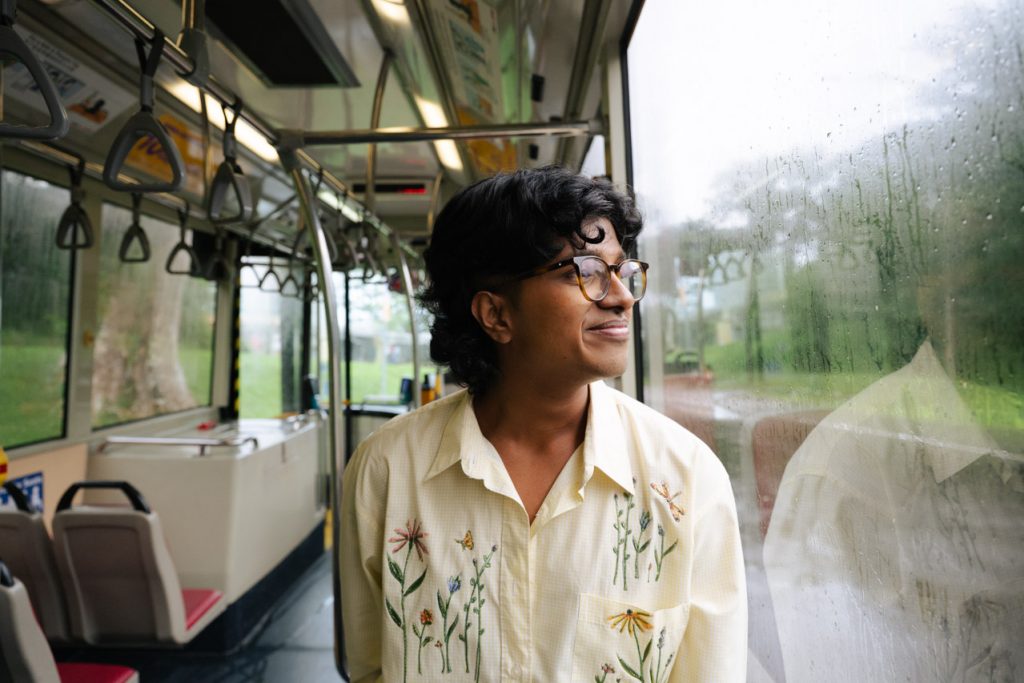
As we experience the rhythm of a ride he once took so often, Barani points out landmarks and reminisces about the stories that marked his days spent on the bus.
Nostalgia isn’t just a rose-tinted lens, he feels. “It’s a good checkpoint for us to see where we are in life. Nostalgia allows us to appreciate the things that we have currently and also to appreciate what we had before.”
Shyartiana on Finding Friendships on Bus 30
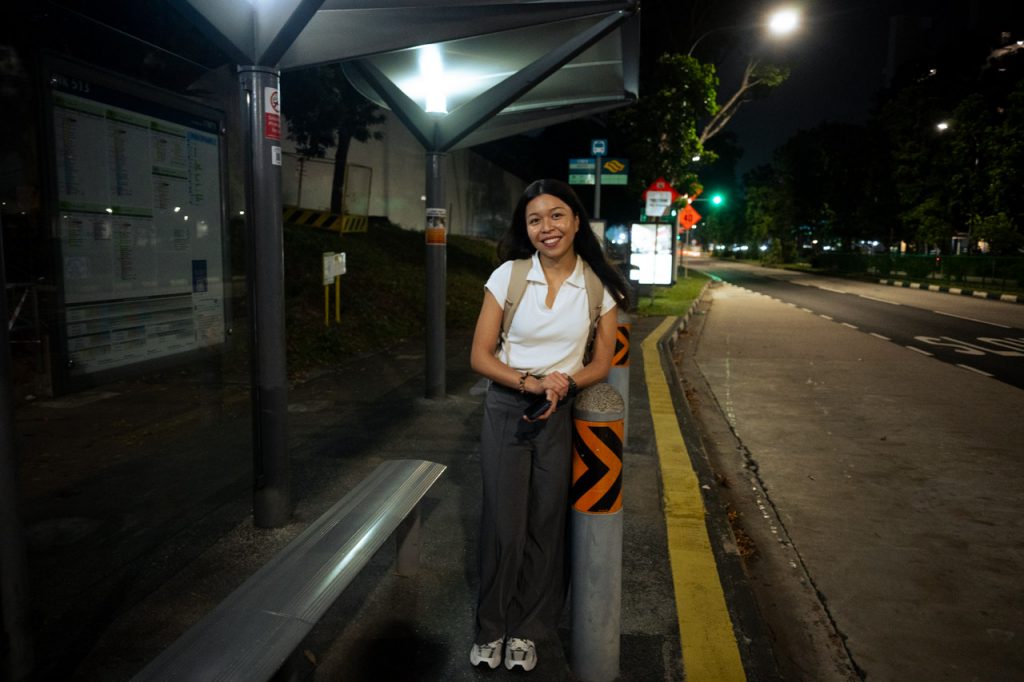
For Shyartiana, bus 30 was more than just a commute—it was the thread that kept the 25-year-old client support consultant tied to a close group of secondary school friends.
Its cross-island route between Bedok and Boon Lay often ran late, making room for spontaneous hangouts and unplanned late nights. These were the moments that pulled the four of them even closer.
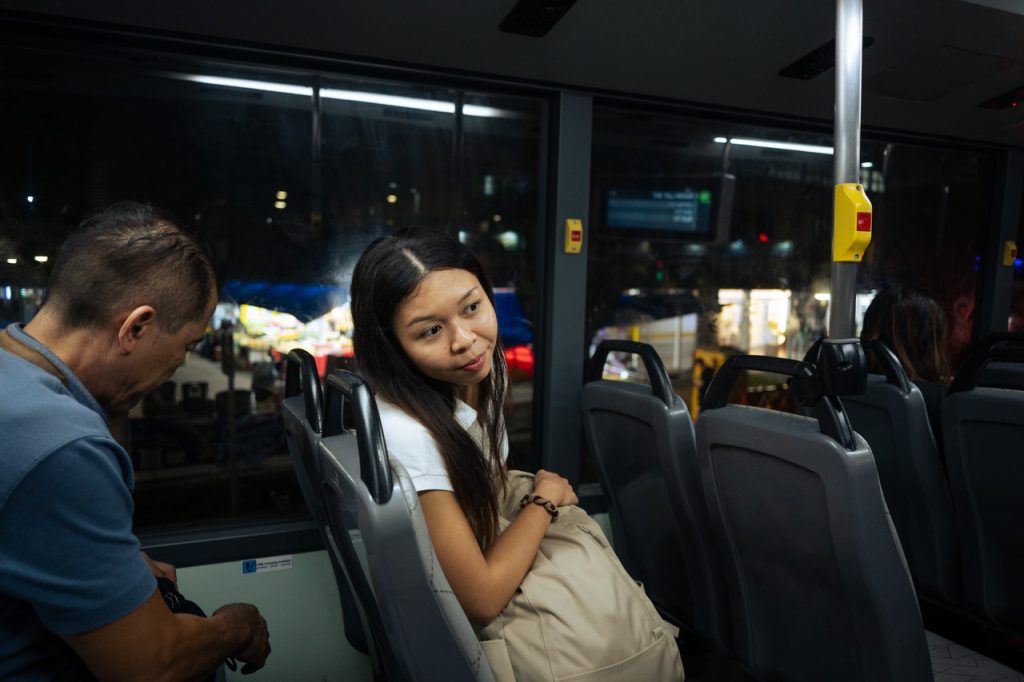
When we met to catch bus 30 after her workday, she shared how returning to this familiar route sparked a quiet revelation.
“If not for bus 30… would I still have stayed close friends with them?”
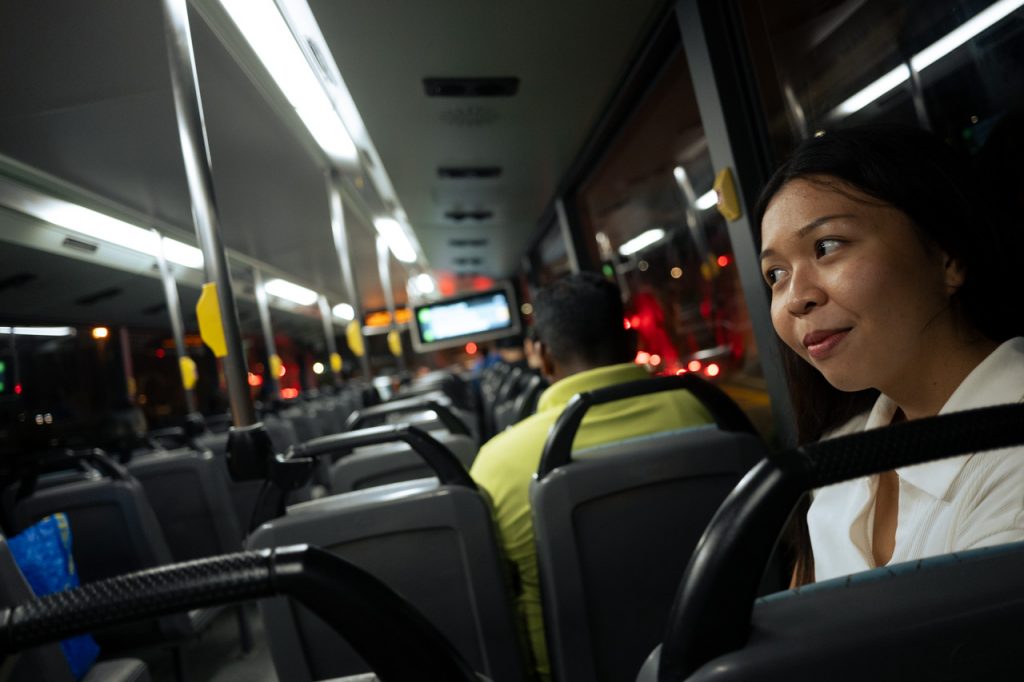
As she grew up, she felt herself becoming more firm in her values and having a better understanding of the type of person she wanted to be. It was only natural for their paths to eventually diverge, and she came to realise that her values didn’t always align with those of her secondary school friends.
“One of the reasons that we kept close is because of this proximity or accessibility to each other.”
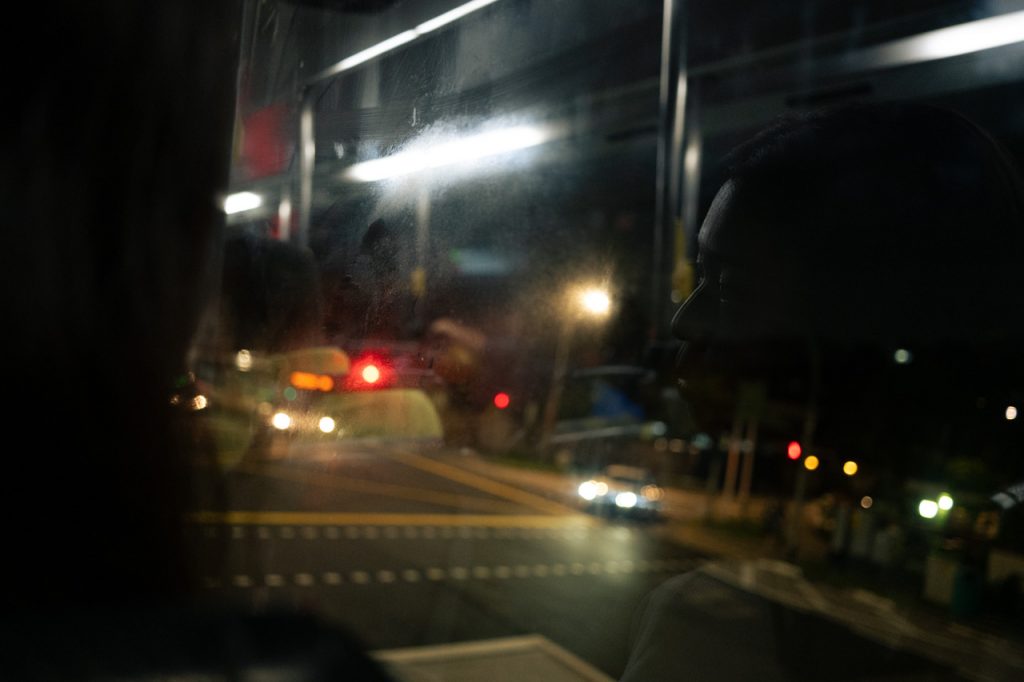
It’s normal for social circles to shrink in adulthood, after all. More priorities, less time to figure things out.
She’s not about to cast her friends aside just because they’re no longer a bus ride away. “But hangouts would definitely be less frequent, and we’d probably grow more distant.”
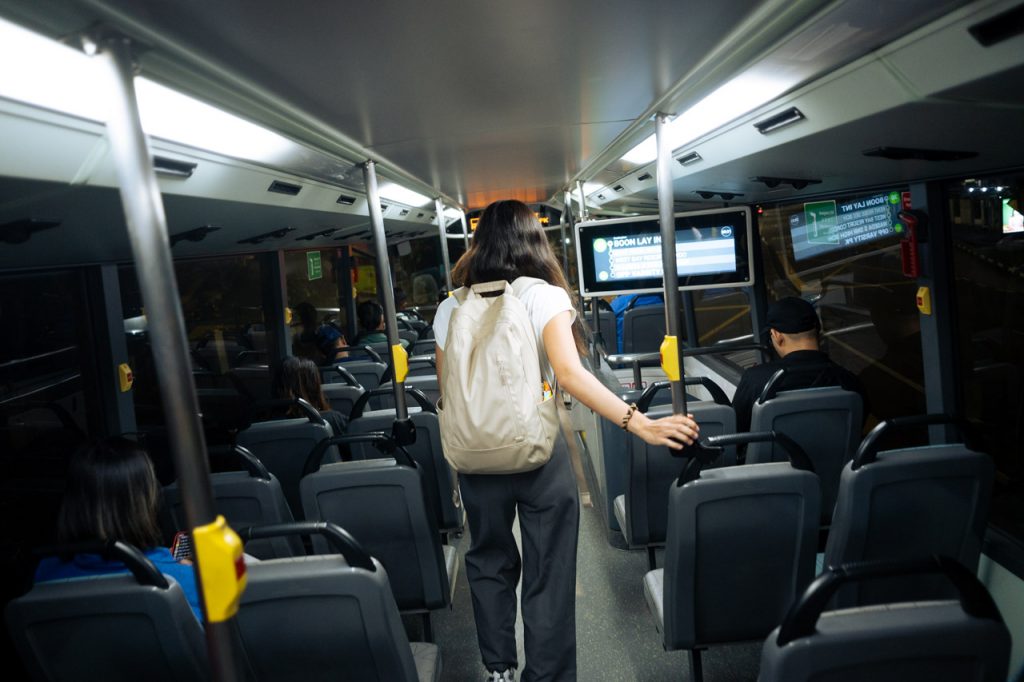
Friendships, she reflects, take on a different shape depending on the stage of life you’re in.
“If I’m in primary school—maybe as long as we can get along or if we like the same things—we can be friends. But as I get older, time gets limited. You have to be conscious of the time that you can give people.”
Now that she and her friends have started working, their time together has become far more intentional. They don’t meet as often as they used to, but when they do, it’s usually planned. And it often involves a bus ride beyond the familiar corners of their old neighbourhood.
Life’s Next Stop
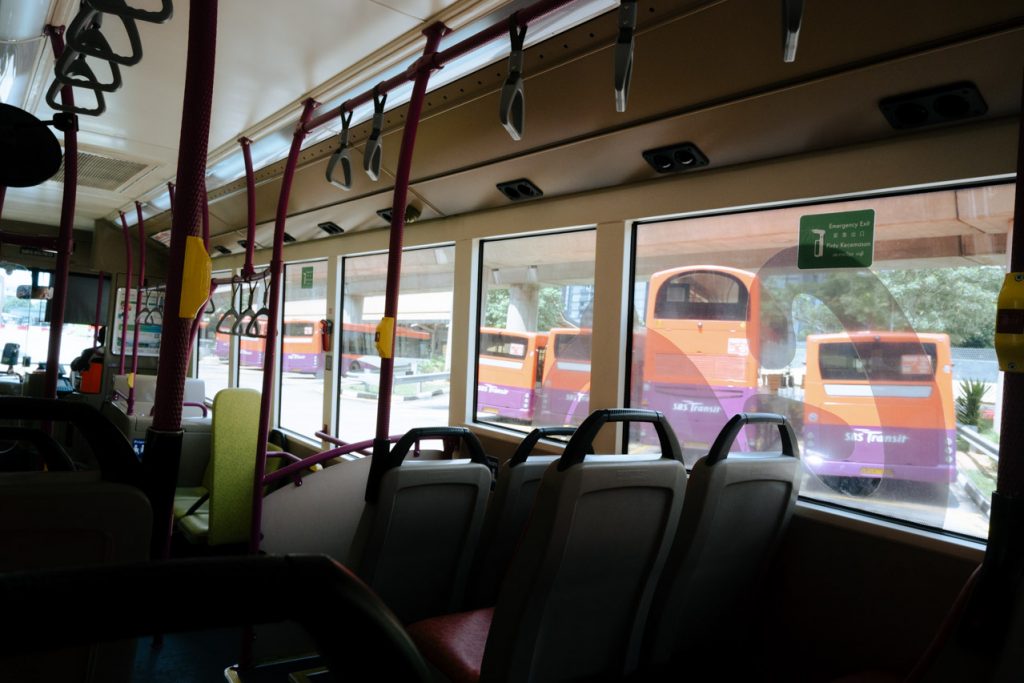
As bus 154 nears the terminal at Eunos, I squint at a familiar building. It’s the MacPherson neighbourhood where I photographed Jackson Au just two months ago during GE2025, as a fresh RICE intern. It’s also a reminder of how life unexpectedly leads me to places—and pushes me to do things I never thought I would.
At the end of the route I grew up on, I’m keenly aware of time passing—from primary and secondary school to finishing my internship as I graduate university.
In many ways, I’m still the anxious kid, watching the world rush by on the bus. But I’ve also learned a great deal, thanks to the people who’ve shared their stories with me on the ride.
Now, as I step into the next chapter of adulthood, I’m ready to stop counting down the stops. Because life’s commute only gets better when I’m truly present.

